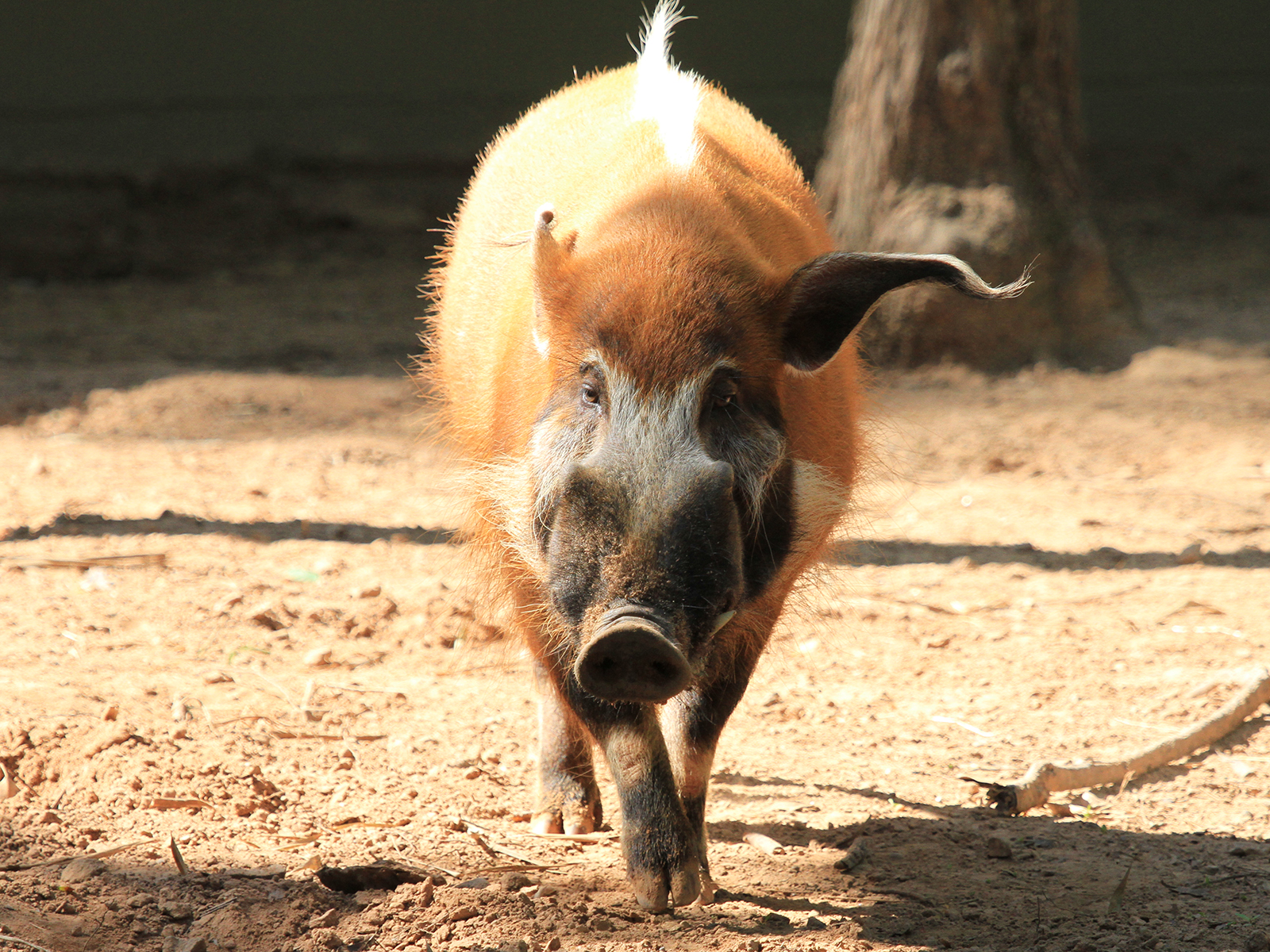Red River Hog
Potamochoerus porcus
Class
Mammalia
Order
Artiodactyla
Family
Suidae
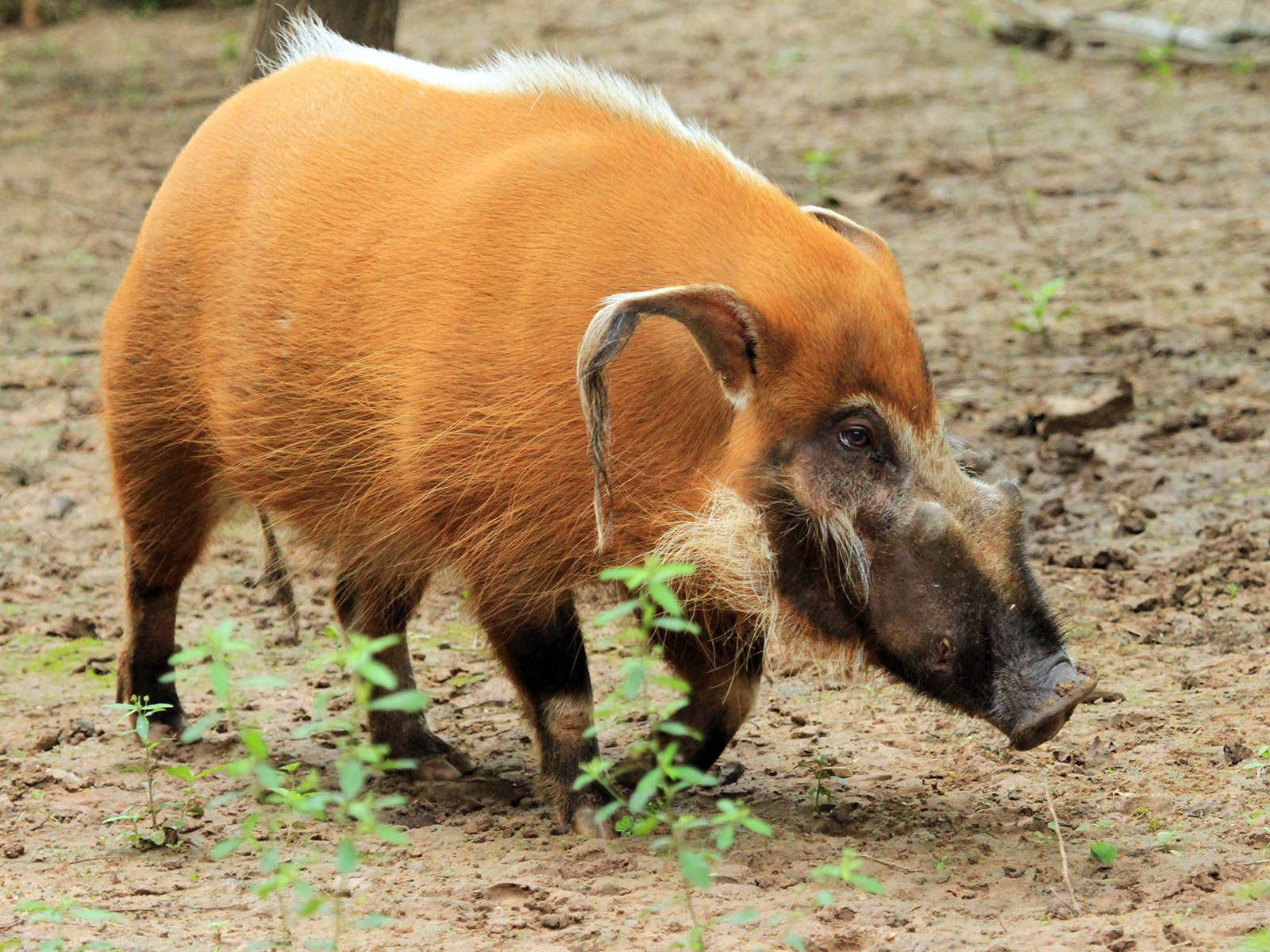
Mammalia
Artiodactyla
Suidae
Africa, south of the Sahara to northern South Africa
Length: 3 - 5 ft
Height: 2 - 3 ft
Weight: 100 - 290 lbs
Rainforest, forest, and savanna woodland
Avg. 2 - 4
Gestation: 122 days
Omnivores; will eat just about anything including tubers, roots, insects, worms, grass, berries, small mammals, and carrion
Least Concern
Red river hogs are named for their reddish brown fur and the fact that they often wade through water.
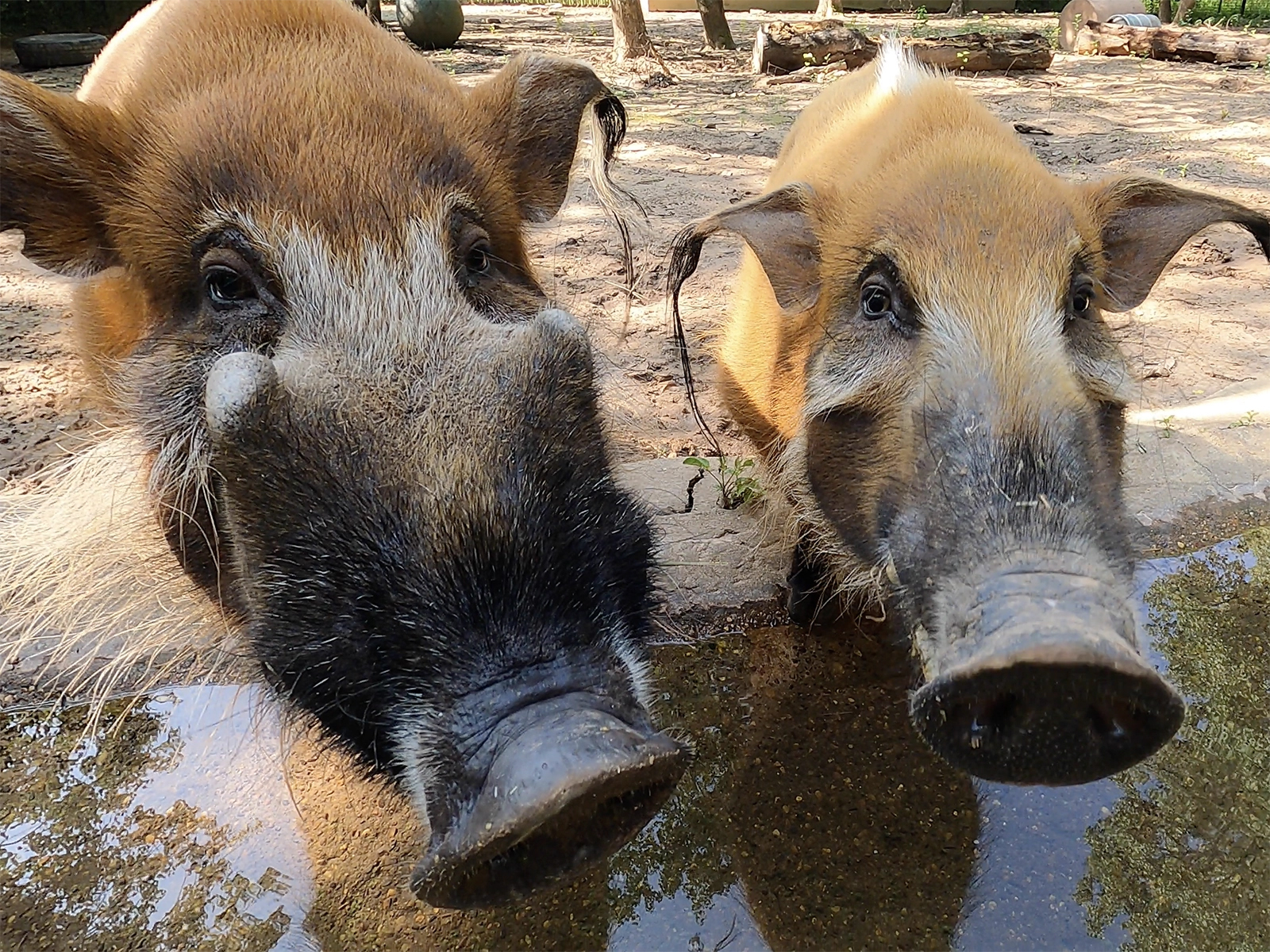
Also called African bush pigs, these gorgeous hogs use their snout like a plow to dig up roots and find food. Their upper tusks are relatively small and almost invisible, while the lower ones are razor sharp and grow 3 inches long.
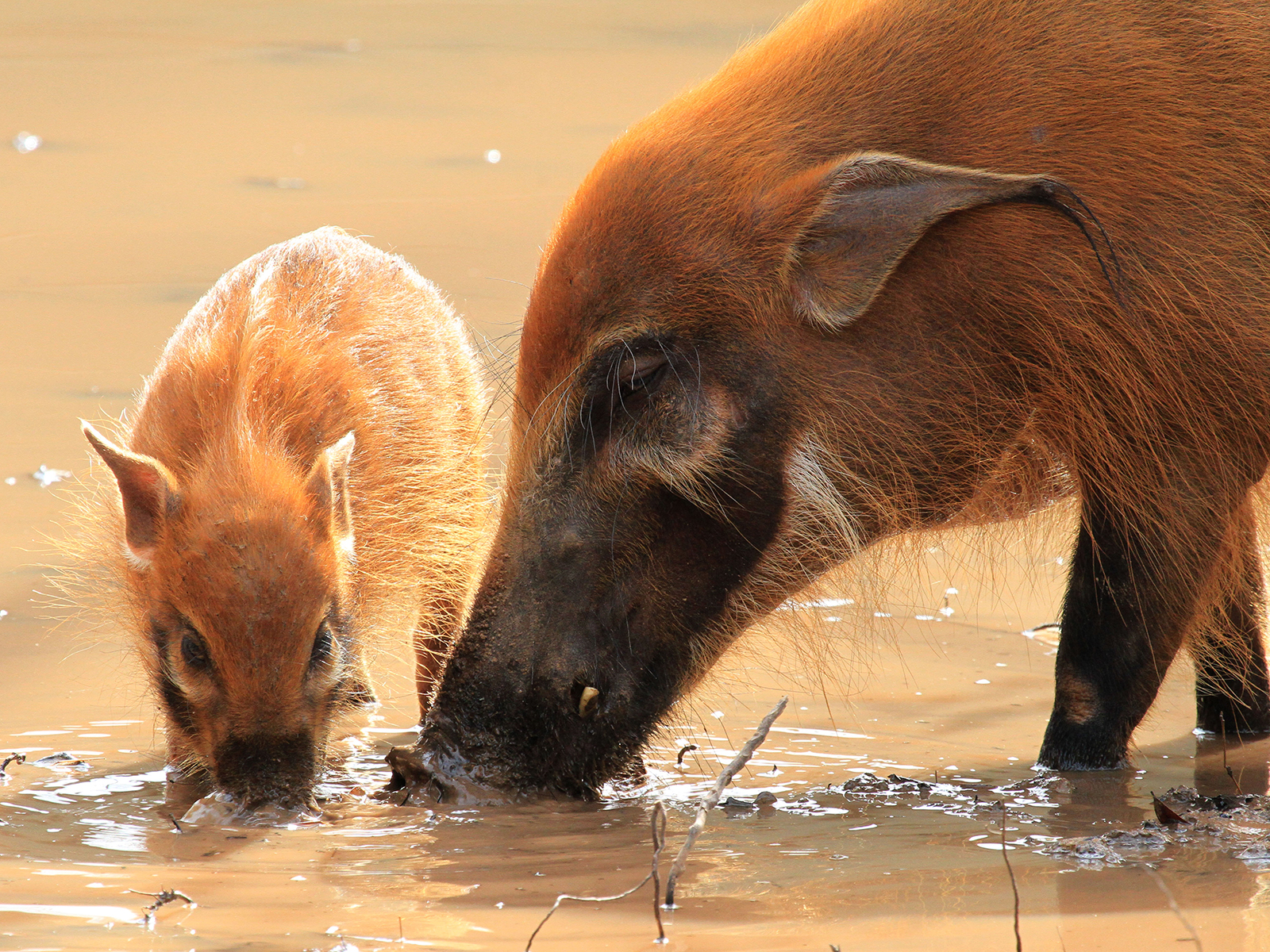
Red river hogs live in social groups called sounders. Males are called boars and females are called sows.
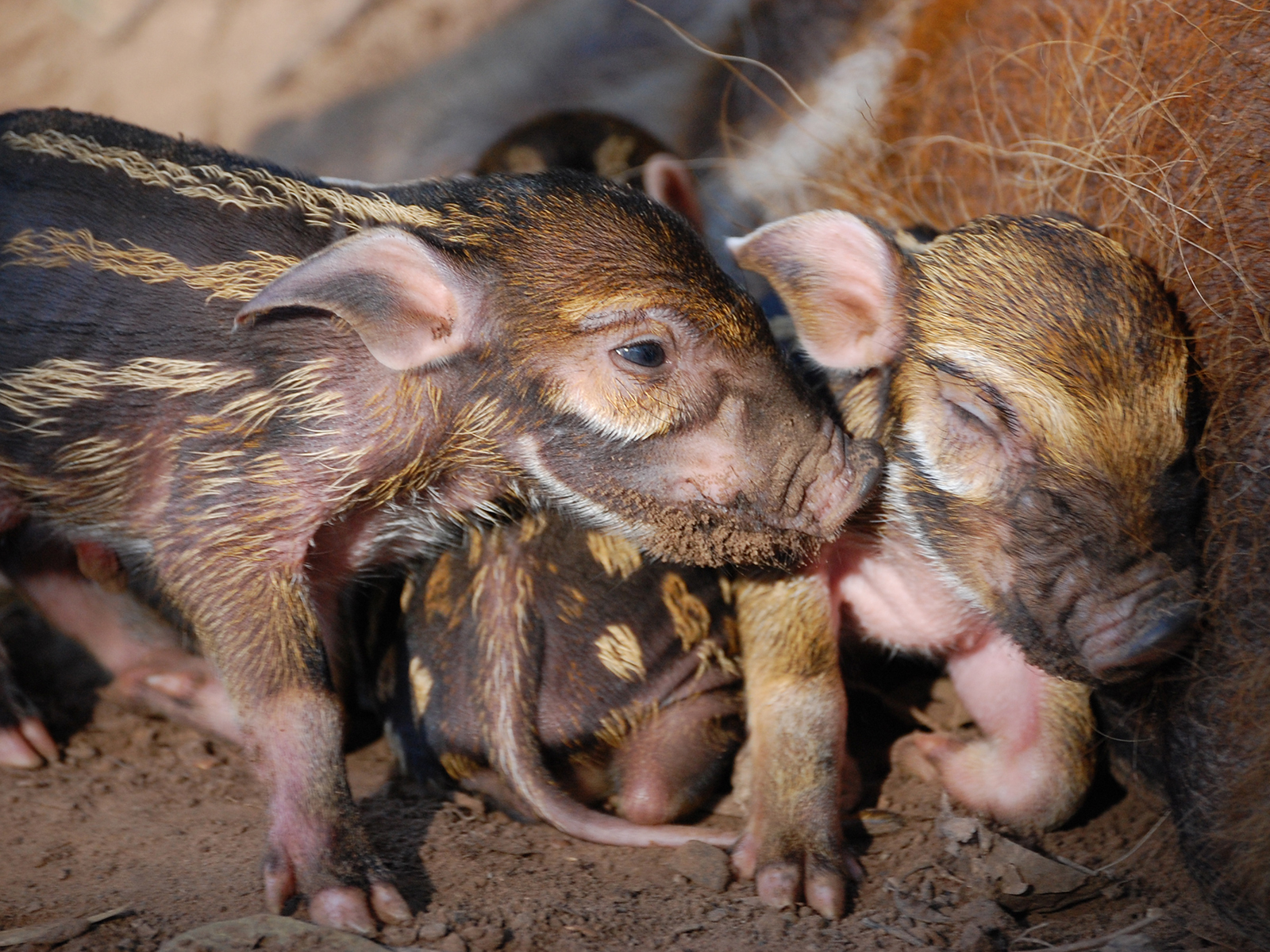
Pigs are the only hoofed mammals to have litters rather than one or two young. Red river hog piglets are born with yellow stripes along the back and sides of the body. At 3 months, the stripes fade to a rufous coat with a black and white dorsal crest.
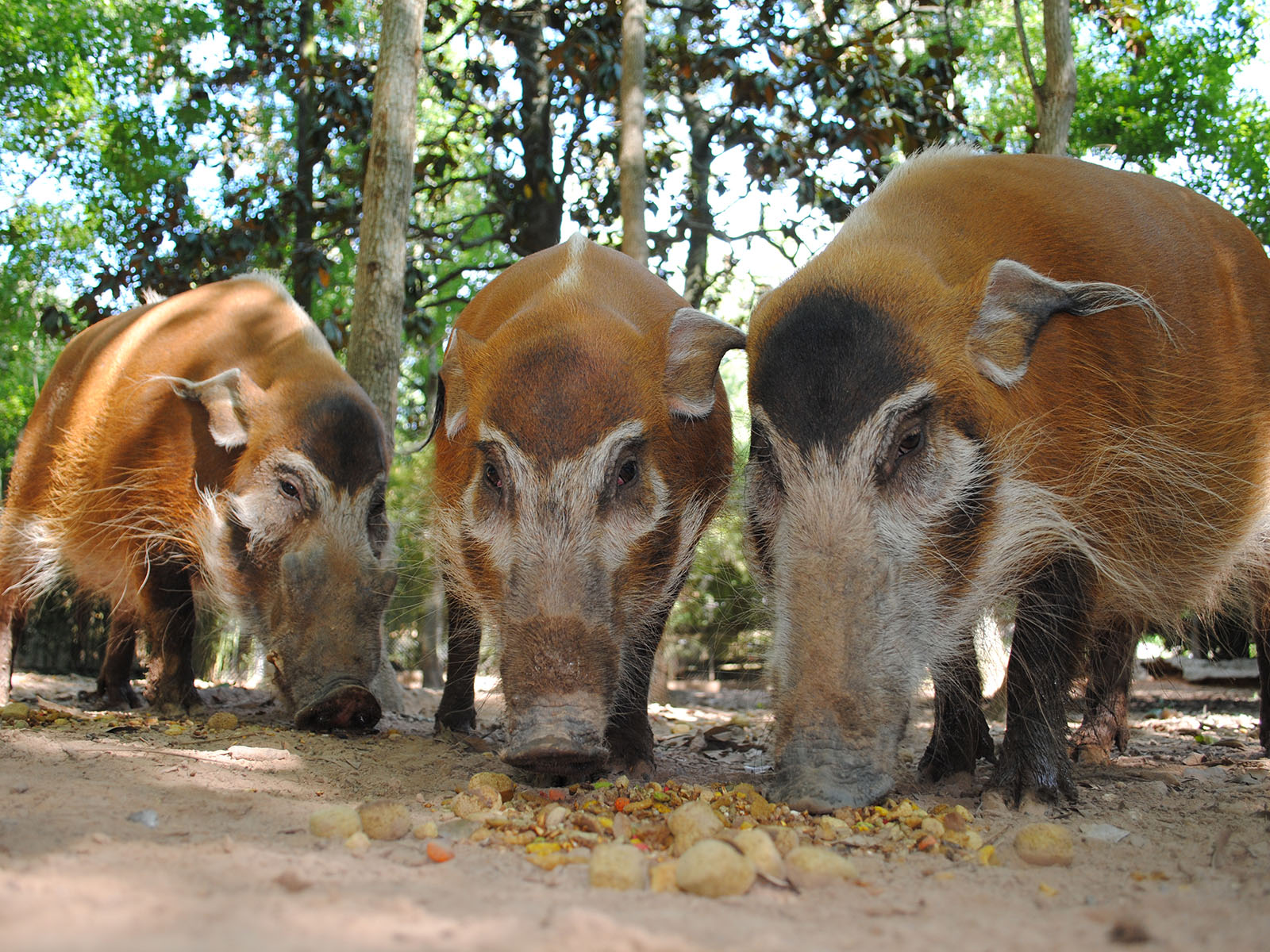
Farming has spread throughout their range in Africa, providing good grazing for these pigs and lessening the population of leopards, one of the red river hog’s natural predators. However, hog raids on gardens have led to farmers taking drastic measures to protect their crops, including extermination. Red river hogs are also hunted for the bush meat trade, and while they are not yet endangered their numbers are in decline.
Learn and Educate. Understanding the species is a crucial first step. While not as well-known as other African animals, Red River Hogs play a role in their ecosystem by dispersing seeds and turning over soil, which benefits the forest. By learning about them and sharing that knowledge, you can raise awareness and inspire others to support conservation efforts.
Hagrid Born March 25, 2015
Rosie Born May 1, 2014
